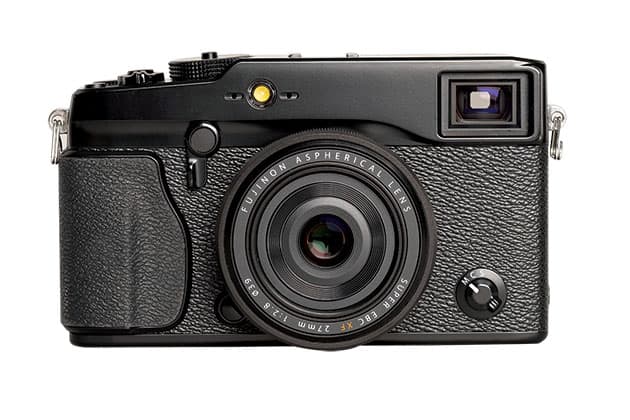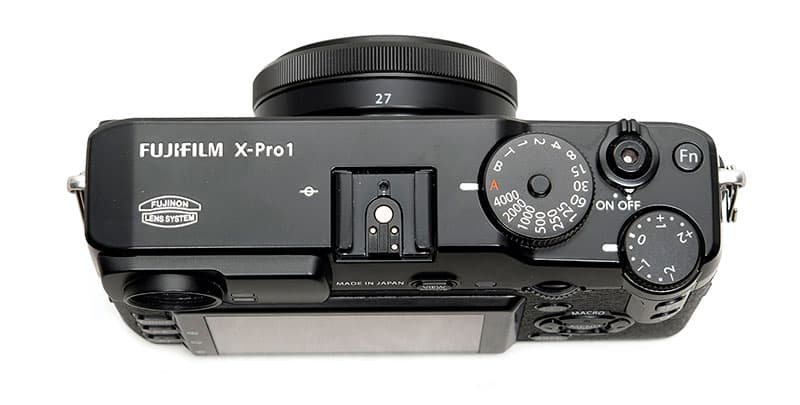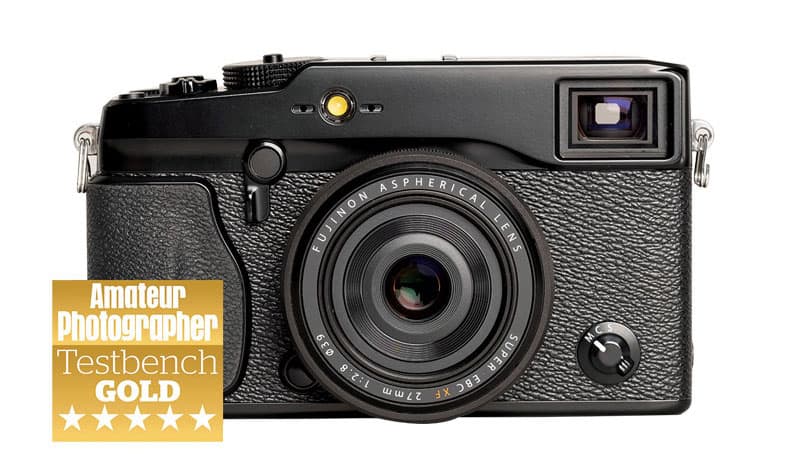
Although the X-Pro1 doesn’t claim the title of being the first model in the X-series – something that the X100 is known for – it will be remembered as Fujifilm’s first mirrorless interchangeable-lens camera. It arrived in 2012 and quickly a gained interest from photographers looking for a smaller system camera that merged a retro, stylish design with excellent practicality. Fujifilm’s first-generation 16MP X-Trans CMOS sensor presents an ISO range of 200-6400, extendable to ISO 100-25,600. Its hybrid multi-viewfinder combines an optical viewfinder with a digital display; it can shoot at up to 6fps and positions a 3in,1.23-million-dot fixed screen at the rear.
Fujifilm X-Pro1 at a glance
- £204 body only (via MPB.com)
- 16.3MP APS-C X-Trans CMOS sensor
- ISO 100-25,600 (extended)
- Single card slot (SD/SDHC/SDXC)
- 3in, 1.23-million-dot LCD screen
- 454g
For and against
+ Superb build quality
+ Produces stunning images
+ Discreet understated styling
– Pedestrian autofocus performance
– Mediocre buffer clearing
– No Wi-Fi connectivity
What we said
- ‘The feature set of the X-Pro1 is as comprehensive as a serious photographer would want, but without being bloated with facilities that will never be used.’
- ‘The main strength of the Fujifilm X-Pro1 has to be its combination of easy handling and the amount of detail it can resolve from its APS-C sensor.’
- ‘The X-Pro1 saves photographers the extra £3,600 that’s required for a Leica M9.’
What to pay
There’s no shortage of used X-Pro1’s available, with MPB.com stocking 11 of the cameras on its books. You can expect to pay £229 for an X-Pro1 in ‘good’ condition with a battery, charger, original packaging and body cap. Examples in ‘excellent’ condition cost a bit more (£264). You’re able to view detailed images of the camera you’re interested in on MPB’s website, so there are no nasty surprises when it’s delivered to your door.
How it fares today
At only seven years old, the X-Pro1 isn’t a particularly old camera. The sensor still delivers good results, albeit not with quite the same resolving power or the same impressive high-ISO noise response as the current X-Trans CMOS 4 sensor found in the X-T3 and X-T30. Video was a bit of an afterthought too, with Full HD recording at 24fps no match for the 4K video recording features available today.
New alternatives
Fujifilm has gone from having two cameras in its X-series interchangeable-lens camera lineup in 2012 to having 10 models in its product range today. The X-Pro2 arrived in early 2016, introducing a 24MP APS-C X-Trans CMOS III sensor with a wider sensitivity range and multiple speed benefits including a notably faster AF system, dual card slots and the splendid Acros mono film simulation mode.
What the owners think
Three Fujifilm X-Pro1 users give their verdict
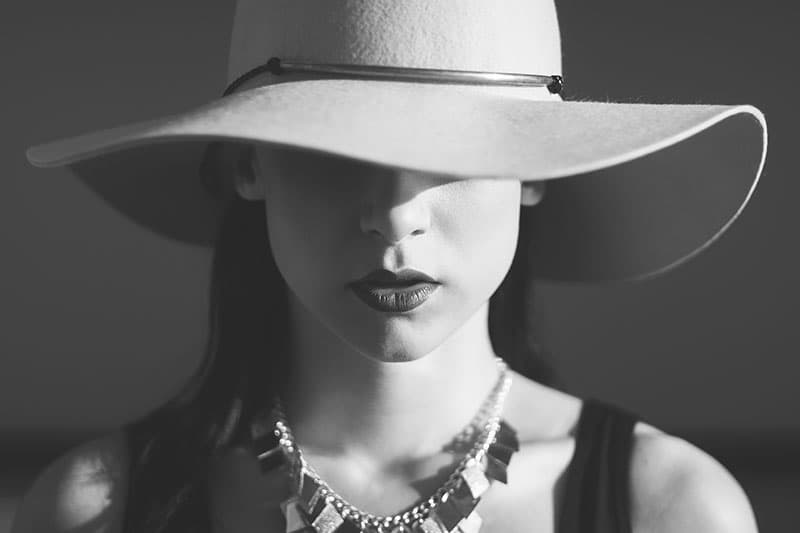
The X-Pro1’s sensor delivers exquisite results when it’s coupled with one of Fujifilm’s superb prime lenses. Fujifilm X-Pro1, Fujifilm XF 56mm f/1.2 R APD, 1/2000sec at f/1.8, ISO 200. Credit: Dave Kai-Piper
David Kai-Piper
‘The X-Pro1 was a camera that changed my idea of the type of photographer I was, but why, is not such a simple answer. For many people like me, we had been shooting with DSLRs, and they were just not objects of beauty. They were and still are designed with function in mind, and style as a secondary afterthought. Ricoh did well with the GRs, and Olympus had the PEN range. I still love both cameras, but they did not pack enough punch to be something I would use for work and pleasure. Enter the X100, which was a revelation, but it was the X-Pro that took the idea of matching performance and style, something which only Leica did and gave to the masses – how can that not be a winning formula? The X series was designed to be used on the way to work, at work, then on the way home again. That’s a great philosophy.
For and against
+ Excellent button and dial placement
+ Designed with function in mind
– Video capture was something of an afterthought
– Fixed screen as opposed to the tilting variety

The Northern Lights captured close to Mark’s home on the Isle of Skye in Scotland. Fujifilm X-Pro1, Samyang 12mm f/2.0 NCS CS, 20sec at f/2, ISO 3200. Credit: Mark Simpson
Mark Simpson
I came late to the Fujifilm X-Pro1, buying it after owning the X-T1 and X-Pro2 cameras. The main reason for the purchase was the image quality – a wonderful ‘organic’ look to the images that, to my eyes, has not been bettered since. Ergonomics are superb with both the shutter speed and exposure compensation dials ideally placed on the top cover. The other controls feel classy and build quality is top notch. I don’t use the optical viewfinder much, preferring to see an accurate preview of the image in the electronic viewfinder (EVF) or rear screen. Things I’m not too keen on are: the battery life, lack of built-in dioptre control, the EVF shows its age with composing a night sky image being total guesswork, and high-ISO performance is not as good as that on newer cameras but the noise is fairly smooth and never that obtrusive.
For and against
+ Wonderful organic look to images
+ Quite brilliant ergonomics
– Lack of built-in dioptre control
– Battery life
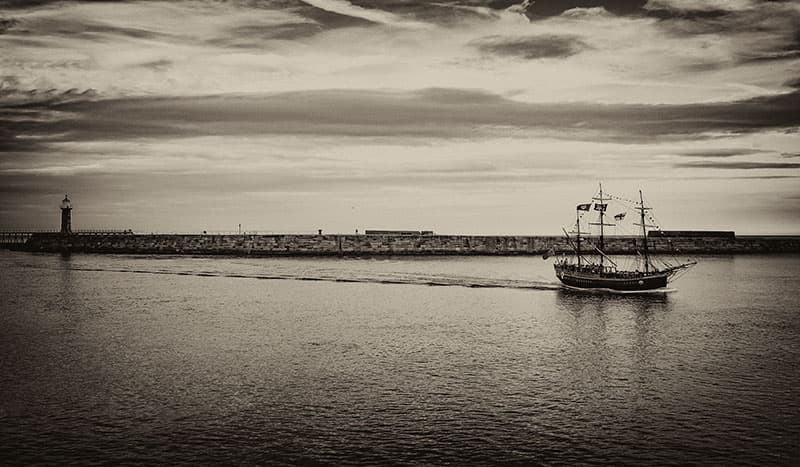
Whitby’s pirate ship returns to the harbour. Fujifilm X-Pro1, Fujifilm XF 18-55mm f/2.8-4 R LM OIS, 1/75sec at f/9, ISO 200. Credit: Andrew Davison
Andrew Davison
I remember walking into a high-street electrical shop and seeing the X-Pro1 (which was just replaced by the X-Pro2) on sale for the ridiculously cheap price of £158. It was clearly a mistake and I ended up buying two! This was my first Fujifilm model and my first ‘grown up’ camera. The dials, the buttons, the available settings, they all made me want to get the best out of the X-Pro1. Coupled with a Fujifilm XF 18-55mm lens, I learnt more about photography from using this camera than any before it. What impressed me about the X-Pro1 was its size, build quality and a kind of ‘retro’ feel to its design. I found it great for most genres of photography as its size and weight meant I could lug it around all day, be it around town or elsewhere, and never tire of it in my hand.
For and against
+ Great design and build quality
+ Ideal travel and street camera
– Megapixel count isn’t great by today’s standards
– Battery life could be better

